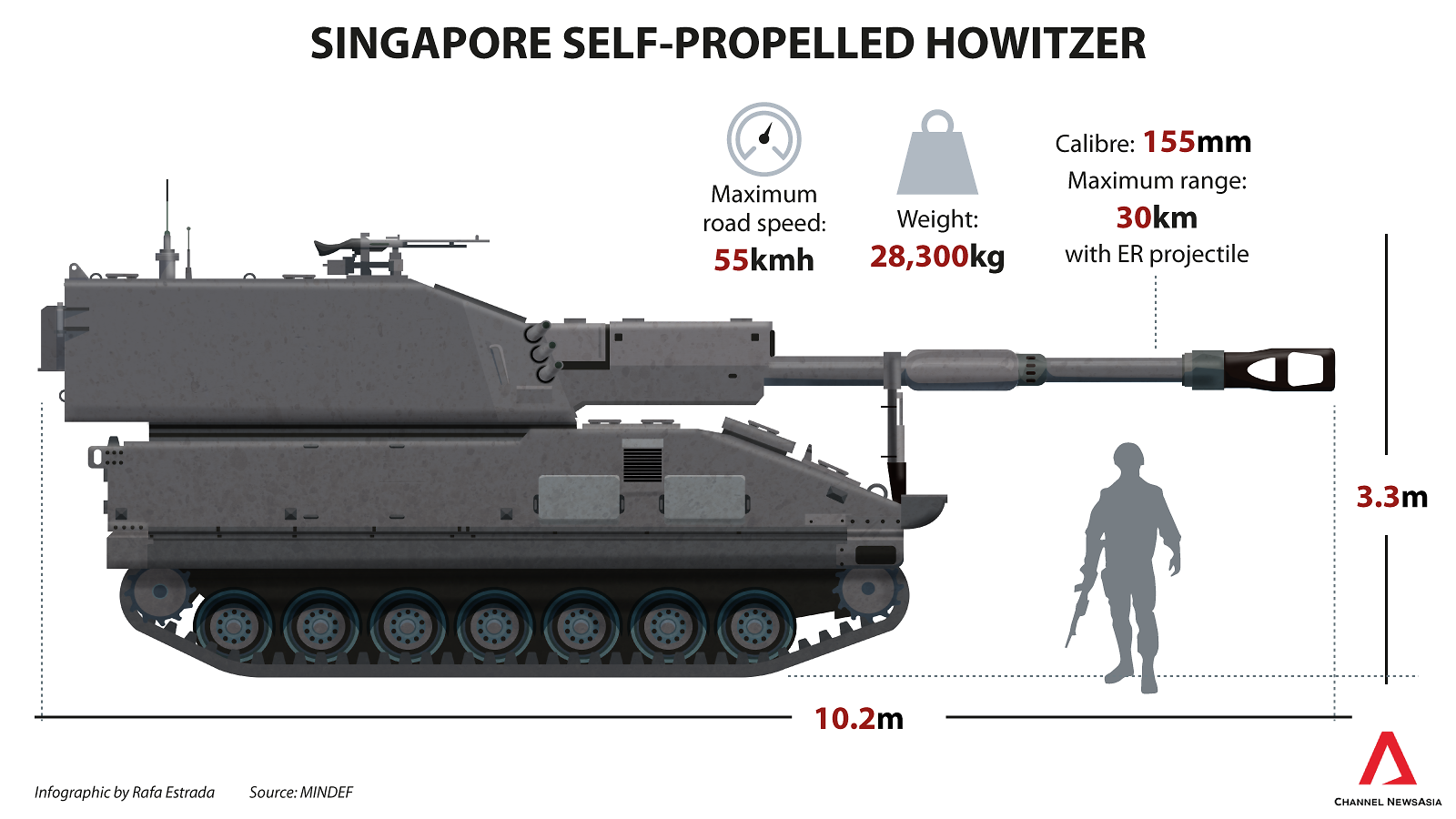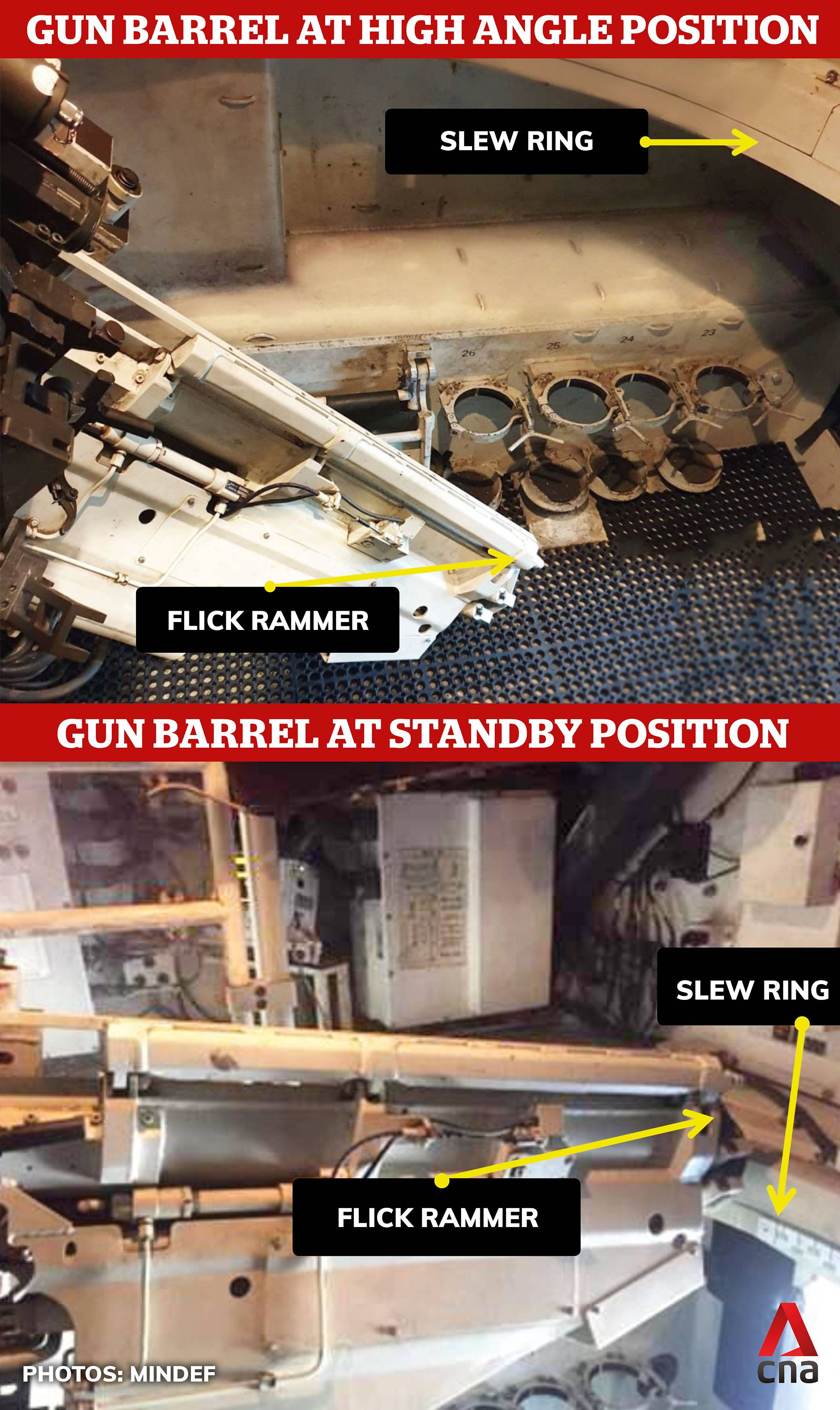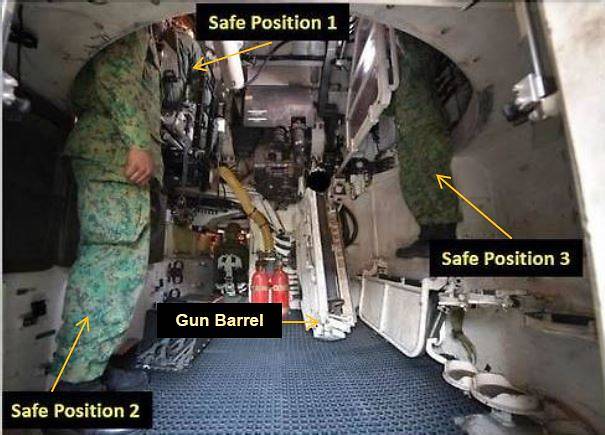SINGAPORE: The training accident that led to the death of national serviceman Aloysius Pang in January was due to lapses by Pang and two other serviceman who were in a Singapore Self-Propelled Howitzer (SSPH) at the time, a Committee of Inquiry (COI) has found.
The five-member committee also found no evidence indicating that the accident involved foul play or was caused by deliberate acts, Defence Minister Ng Eng Hen told Parliament in a ministerial statement on Monday (May 6).
Corporal First Class (National Service) Pang died after sustaining serious injuries during a Singapore Armed Forces (SAF) training exercise in New Zealand. Pang was crushed between the gun barrel and cabin while carrying out maintenance work in an SSPH.
READ: Actor Aloysius Pang dies after sustaining serious injuries in SAF training accident
Pang was inside the SSPH with a gun detachment commander, a Third Sergeant national serviceman, as well as a technician, a Military Expert 2 who is a regular serviceman.
The COI found the “precipitating cause” of the incident was that the gun barrel was lowered without ensuring that everyone was in their safe positions:
- Pang was standing in the path of the moving barrel and not in a safe position prior to the barrel being lowered
- Pang did not move to a safe position despite being warned that the barrel was going to be lowered to a standby position
- The regular technician did not ensure that Pang moved to a safe position despite knowing that the barrel would be lowered
- The gun commander proceeded to move the barrel despite noticing that Pang was not in a safe position, which goes against a requirement stated in the SSPH operator’s manual
- Both the gun commander and regular technician failed to press the emergency stop buttons to stop the barrel movement
The COI also said that a combination of factors contributed to the incident:
- There was a lack of clarity on who should be in the gun and whether acknowledgement was needed before the barrel was moved, pointing to a lack of coordinated safety control procedure between the gun and maintenance crew
- The regular technician had started on a specific maintenance task before the barrel was in a locked position, which goes against a requirement stated in the maintenance manual for SSPH technicians, to “get on with the job quickly”
- The regular technician and gun commander had miscalculated the space in the cabin and the time it took for the flick rammer (the rear end of the barrel in the cabin) to hit Pang
- In their state of panic, the regular technician and gun commander had “acted irrationally” instead of pressing the emergency stop buttons when the flick rammer hit Pang
The flick rammer at the rear end of the gun barrel. (Photo: Jeremy Long)
As for the judicial process, Dr Ng said the SAF’s Special Investigation Branch has “nearly completed” separate investigations into the incident, and will report directly to the Chief Military Prosecutor to decide if any servicemen will be prosecuted in a military court for related offences.
“Servicemen under investigation are reassigned to administrative duties, and if found to have been culpable, will be charged and punished accordingly,” he added.
READ: Death of NSman Aloysius Pang: SAF investigation branch looking at possible military, criminal prosecution
WHAT HAPPENED
Dr Ng gave a “detailed chronology of events”, established by the COI, leading up to Pang’s injury and subsequent death.

On Jan 19, the SSPH gun commander asked Pang – an armament technician – to conduct corrective maintenance related to the accuracy of the gun. This needed to be rectified before live firing could resume.
The motor drive control unit – ammo handling system box. (Photo: Jeremy Long)
But as Pang could not resolve the issue, a regular technician was sent to help him with the task, which involved changing a card on the motor drive control unit – ammunition handling system (AHS) box inside the gun.
The regular technician briefed the gun commander to turn off the AHS, lock the gun barrel, and turn off the engine and master switch. Locking the barrel required it to be lowered to the near-horizontal standby position.
The regular technician then proceeded to stand in one of the safe positions to loosen the screws on the box, and saw that Pang was removing screws on the right side of the box. However, Pang was not in a safe position and had his back facing the barrel.
In a mixture of Mandarin and English, the regular technician told Pang that the barrel was going to be moved to the standby position. He also told Pang to move closer to him or to a safe position. Pang replied in Mandarin that “it was fine”, and that the barrel would not hit him.
Before moving the barrel, the gun commander said he checked if the path was clear and saw that Pang was standing near the barrel. The gun commander assumed that Pang would have time to move away, given that it would take some time for the barrel to move from its highest elevated position to the standby position.
The gun commander then proceeded to shout “standby, clear away” before activating the control to move the gun. This was heard by the regular technician and personnel standing outside the gun.
As the barrel was being lowered and the flick rammer was moving up, Pang was still removing the screws on the box while looking back at the barrel. Initially, he made no attempt to move away.
But as the barrel moved closer to Pang, the gun commander noticed that Pang was making some “evasive movements”. The regular technician, shocked to see Pang still in the path of the barrel, tried to use his hands to push against the barrel. The gun commander also tried to stop the barrel using the main control screen.
The red emergency stop buttons at the gun commander (left) and regular technician positions. (Photo: Jeremy Long)
“As the gun barrel made contact with CFC (NS) Pang, the COI opined that instead of activating the emergency stop buttons, both the technician and the gun commander panicked and acted irrationally,” Dr Ng said.
“As a result, CFC (NS) Pang was wedged between the flick rammer and the slew ring,” he added, referring to a cylindrical structure surrounding the cabin.

POST-INCIDENT RESPONSE
Pang was injured at about 7pm New Zealand time. He was then attended to by the battery medic on site before being evacuated to the battalion casualty station 10 minutes later. There, he was assessed and stabilised before being evacuated to the Waiouru Base Medical Centre at 7.50pm.
At 9.50pm, he was heli-evacuated to Waikato Hospital, where he was operated on at around 1am. Pang underwent two more operations on Jan 21 and 22 before his condition deteriorated.
READ: Aloysius Pang was crushed between howitzer gun barrel and cabin
On Jan 24, Pang died from “severe sepsis arising from his severe chest and abdominal injuries”, as a result of being caught between the flick rammer and slew ring in the SSPH.
INCIDENT WAS PREVENTABLE IF SAFETY RULES WERE FOLLOWED
The COI also commented on factors related to but not contributory to the incident or outcome.
It found that there was no mechanical fault with the SSPH gun that had directly caused the incident, adding that technicians certified the guns fit for firing both in Singapore and New Zealand before the exercise.
The COI also said the post-incident medical care was “adequate but can be improved”, given the extenuating circumstances caused by distance and the availability of the helicopter.
However, the COI is also of the opinion that “this did not cause or contribute to” Pang’s death, Dr Ng said.

Safe positions inside the SSPH (Picture: MINDEF).
Dr Ng stated that it was “sad but undeniable” that the direct cause that resulted in the death was “preventable had there been compliance to safety rules”.
“It was not for lack of knowledge of those rules or inexperience of personnel working on the SSPH gun,” he added. “The COI determined that prior to the incident, all three personnel in the gun had received adequate training to be aware that whenever the gun barrel is moved, they must be in a safe position.”
READ: Aloysius Pang first soldier to be injured operating Singapore Self-Propelled Howitzer: MINDEF
Dr Ng said Pang had attended several courses and training during his full-time national service, graduating with an overall “A” grade from the armament basic technician training (turret). Last February, he had attended maintenance vocational training during his sixth in-camp training in preparation for the overseas exercise.
Pang also had a positive work attitude and was “very helpful” when it came to work, Dr Ng said, citing accounts by his peers to the COI. “He was also professional when executing his tasks and was seen by his superiors as someone who would not cut safety corners when working.”




